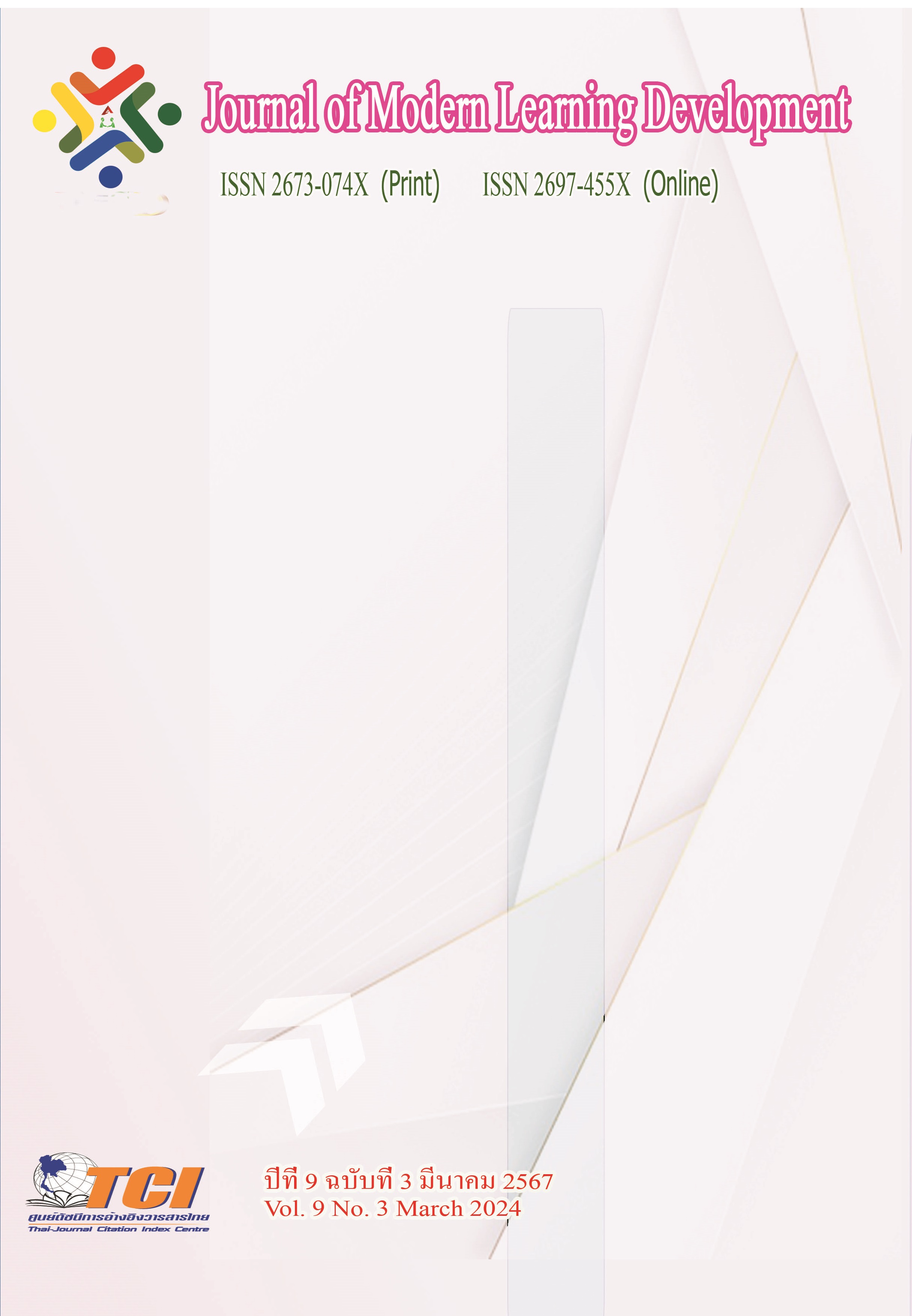The Application of Kālāma-Sutta Principles with Online Social Media
Main Article Content
Abstract
In this article, the author aims to study the Kalama Sutra of Theravada Buddhist scriptures. and the application of the Kalama Sutra to using social media. In relations to the communication in the Kālāma-Sutta in Theravada Buddhism, the Kālāma-Sutta is the doctrine that the Buddha preached to the Kalama-residents. It is the communication between the Buddha and those residents, caused by the Kālāma residents’ question that among the ascetics or Brahman spreads their teaching to the Kalama-residents, which one says the truth or the false? The Buddha answered that do not intend to believe in 10 points in the information transmission of communication, but first consider the fact of communication that anything in communication, both personal and informative communications has facts that are wholesome or unwholesome, with penalty or without penalty, implemented or not by the Guru. When the facts have fully practiced, they are believable and can be applied to benefit society.
In regards to the application of the Kālāma-Sutta principles in using the online social media, in this era of globalization, there is a use of social media to communicate information using modern information technology. This makes fast communication without boundaries in all dimensions, both the creation and dissemination of information. The application of the Kālāma-Sutta can be used to consider the social media communication process. It helps in deciding to believe information reasonably and also preventing and solving the false or useless online social problems. This will benefit oneself and help the society to be peaceful. At the same time, the online social media may also be used to help spread Buddhist principles more efficiently than normal communication.
Article Details
References
มหาจุฬาลงกรณราชวิทยาลัย. (2539). พระไตรปิฎกภาษาไทยฉบับมหาจุฬาลงกรณราชวิทยาลัย.กรุงเทพมหานคร : มหาจุฬาลงกรณราชวิทยาลัย
คงศักดิ์ ตันไพจิตร. (2552). พุทธอัจฉริยะ. (พิมพ์ครั้งที่ 3). กรุงเทพมหานคร: สำนักพิมพ์ดีเอ็มจี.
คณะวิชาการ. (2562). ประมวลกฎหมายอาญา (ฉบับแก่ไขเพิ่มเติม พ.ศ.2562). กรุงเทพมหานคร: ห้างหุ้นส่วนจำกัดพิมพ์อักษร
ไทยรัฐ. (2562). จุดบั้งไฟบูชาพญาแถนขอฝน. ออนไลน์. สืบค้นเมื่อ 30 ตุลาคม 256ถ. แหล่งที่มา: https://www. thairath.
พระคัมภีรญาณ อภิปุญโญ. (2551). กาลามสูตรกับยุคโลกาภิวัตน์. สุราษฎร์ธานี: ร้านไชยาคอมพิวเตอร์.
พิรงรอง รามสูต รณะนันทน์. (2566). ประเด็นความมั่นคง การเมือง และจริตของสื่อสังคมออนไลน์. ออนไลน์. สืบค้นเมื่อ 20 มิถุนายน 2566. แหล่งที่มา: http://bit.ly/15g3pop.
ปานระพี. (2566). สำนักข่าวไทยเปิดศูนย์ชัวร์ก่อนแชร์. ออนไลน์. สืบค้นเมื่อ 20 มิถุนายน 2566. แหล่งที่มา: https://www. it24hrs.
ราชกิจจานุเบกษา. (2566). พระราชบัญญัติว่าด้วยการกระทำความผิดเกี่ยวกับคอมพิวเตอร์. ออนไลน์. สืบค้นเมื่อ 20 มิถุนายน 2566. แหล่งที่มา: http://www.ratchakitcha.soc.go.th/DATA.
สุชีพ ปุญญานุภาพ. (2541). คุณลักษณะพิเศษแห่งพระพุทธศาสนา. กรุงเทพมหานคร: โรงพิมพ์มหามกุฎราชวิทยาลัย.
แสงเดือน ผ่องพุฒ. (2566). สื่อสังคมออนไลน์: แนวทางการนำมาประยุกต์ใช้. สำนักวิชาการ สำนักงานเลขาธิการวุฒิสภา. 3 (20), 1-19.
สำนักข่าวไทย. (2566). ชัวร์ก่อนแชร์: ส้มตำใส่เปลือกมะนาวทำให้เป็นมะเร็งจริงหรือ?. ออนไลน์. สืบค้นเมื่อ 20 มิถุนายน 2566. แหล่งที่มา: https://m.youtube.com/watch?v=vzmZds4LwyY.
องค์การรักษาความปลอดภัยฝ่ายพลเรือน. (2566). หลักการกระทำละเมิด. ออนไลน์. สืบค้นเมื่อ 20 มิถุนายน 2566. แหล่งที่มา: http//www.secnia.go.th.


